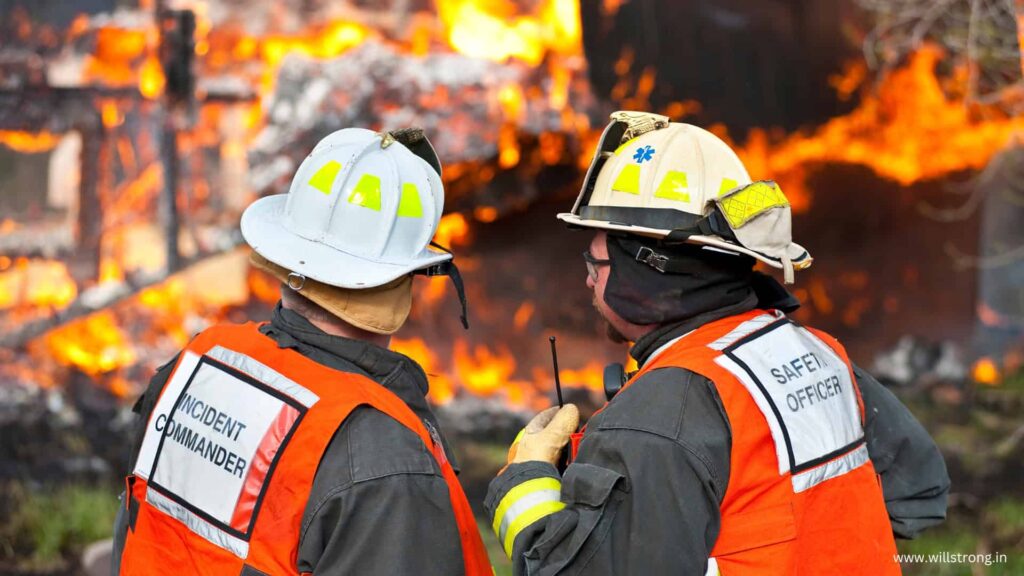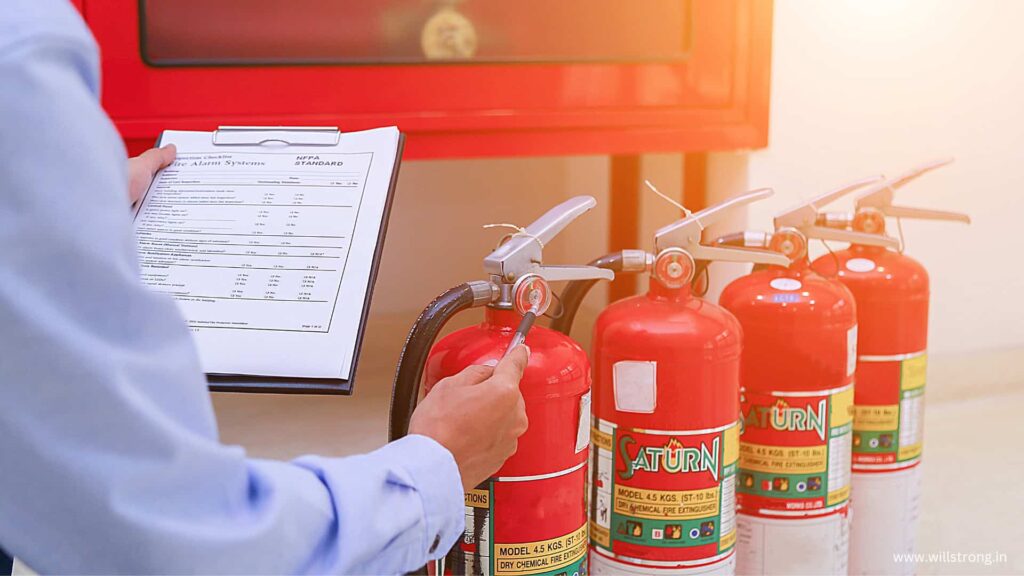Whenever there is a fire in your building, it is very important to take action within the first minute.
This is not only important for your safety but can also save the lives of other people and valuable assets.
But whenever we suddenly see a fire, we get scared and in such a situation we do not understand what we should do and what we should not.
Because of which sometimes we can make such mistakes which can be fatal or very harmful.

Having a clear understanding of fire safety procedures ensures you remain calm and take swift, effective actions.
This guide outlines essential do’s and don’ts in case of a fire to help you stay prepared.

Panic is the worst enemy in an emergency. If you detect a fire, take a deep breath, and stay calm. Clear thinking will allow you to act quickly and efficiently.
Immediately activate the nearest fire alarm or alert others if a fire alarm system is not in place. Early warning is key to ensuring everyone has time to evacuate safely. you can do it through industrial plant communication system.
Dial your local emergency number 112. Provide the dispatcher with detailed information about the fire’s location and severity. Try to stay on the line until the dispatcher confirms they have all the information.
If the fire is small and contained, such as a kitchen grease fire, attempt to extinguish it using the appropriate fire extinguisher. Make sure you know how to operate a fire extinguisher using the PASS method—Pull, Aim, Squeeze, and Sweep. also, you should use the fire suppression system.
Every building should have a pre-established fire evacuation plan. Follow the nearest and safest escape route, keeping low to the ground to avoid inhaling smoke.
When evacuating, close doors as you go. This can help contain the fire, slow its spread, and reduce the damage it causes. Make sure everyone has evacuated before closing the door.
If it’s safe, assist people with disabilities, the elderly, and children in evacuating the building. Remember to follow the escape plan and avoid using elevators.
If there is heavy smoke, cover your nose and mouth with a cloth, preferably a damp one. This helps reduce inhalation of toxic fumes, which can be more dangerous than the flames themselves.
Smoke rises, so the air closer to the ground is safer to breathe. If you encounter smoke during your escape, get on your hands and knees and crawl to the nearest exit.
If you’re in a multi-story building and trapped by fire, use a fire escape ladder to descend safely from a window. Always ensure the ladder is securely fastened before using it.
If trapped in a room, block smoke from entering by sealing the door gaps with wet towels or clothing. This can buy you time by preventing smoke from filling the room.
Buildings often have signs indicating the safest evacuation routes. Follow these signs, especially in unfamiliar places like hotels or office buildings. They will guide you to the nearest safe exit.

Before opening any door, use the back of your hand to feel for heat. If a door is hot, do not open it. Fire could be raging on the other side, and opening the door can cause a flashover. Instead, seek an alternate escape route.
Elevators can malfunction or fill with smoke during a fire, trapping you inside. Always use
the stairs when evacuating a building during a fire emergency.
Once you have evacuated, do not go back for personal items, no matter how important they
seem. Fire can spread rapidly, and returning inside a burning building could
cost you your life.
While it may seem like a good idea to break a window for air, it can actually worsen the situation. Breaking windows allows more oxygen to fuel the fire, making it grow faster. Only break windows if you are trapped and need to signal for help.
Panic leads to poor decision-making. Running aimlessly or without thinking can increase your risk of injury or becoming trapped. Stick to the escape plan and evacuate in an orderly fashion.
Breaking a window or forcing open a door can worsen the fire by letting in more oxygen. Only break windows if you’re trapped and need to escape or signal for help.
If the fire is near electrical outlets or appliances, avoid using or touching anything electrical, especially if it’s wet. Water and electricity are a deadly combination in a fire situation.
Your primary goal is to get out safely. Don’t delay your evacuation by trying to figure out the source or severity of the fire. Trust fire alarms and evacuate immediately.
Avoid leaving items like luggage or personal belongings in hallways or near exits. In a fire, these can become dangerous obstacles for others trying to escape quickly.
Fire drills may seem inconvenient, but they are critical in preparing for real-life emergencies. Ignoring drills could leave you unprepared during an actual fire, when time and knowledge are of the essence. also, you should never avoid fire risk assessment in your industry?
In the event of a fire, the actions you take can save lives. Knowing what to do—and what not to do—helps ensure the safety of yourself and those around you. By following these guidelines, you can minimize risk and stay protected during fire emergencies. Always be prepared with a fire evacuation plan, and remember to stay calm, act quickly, and avoid dangerous mistakes.